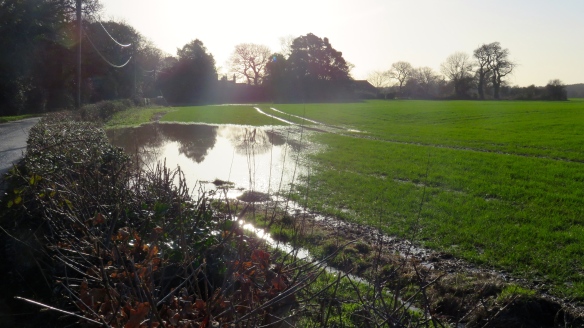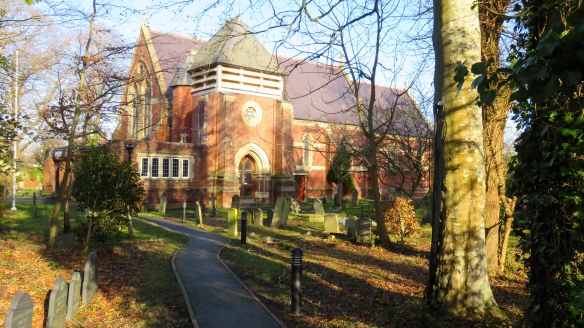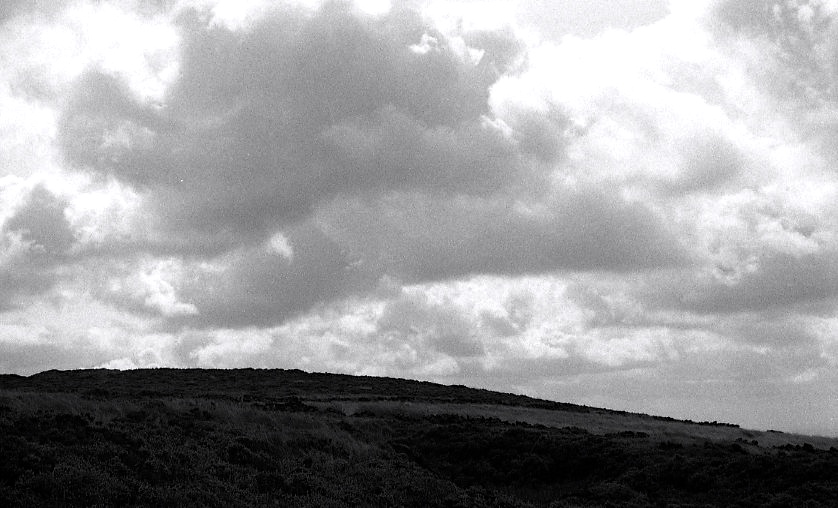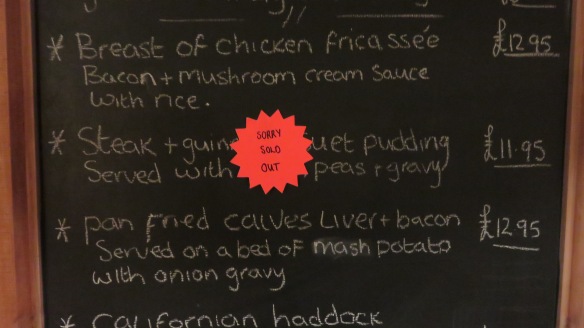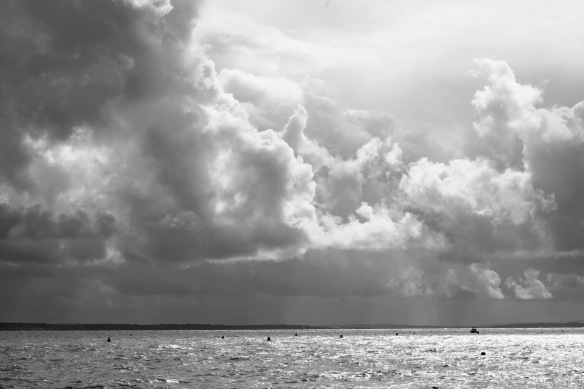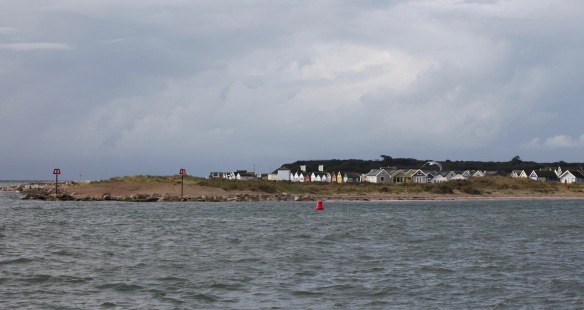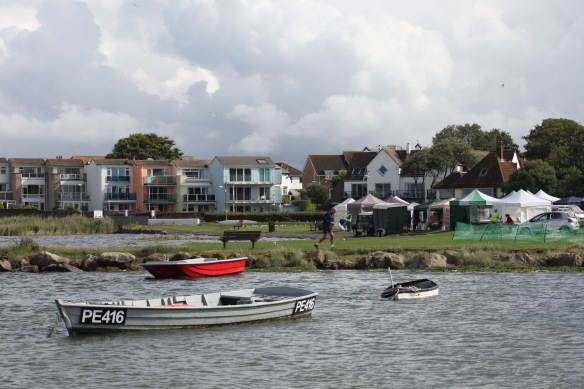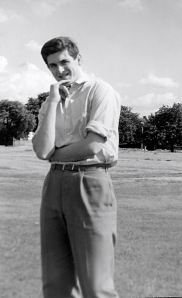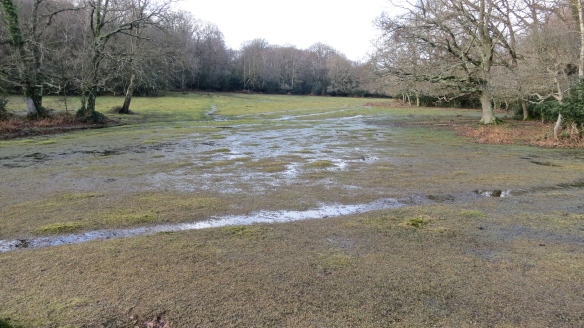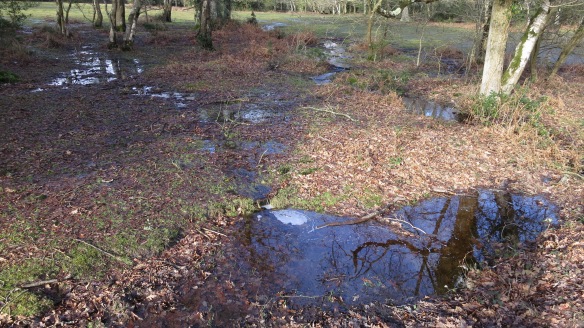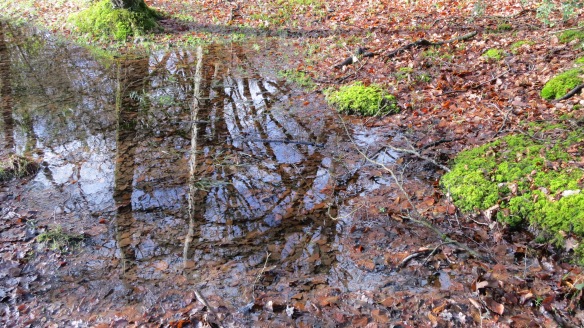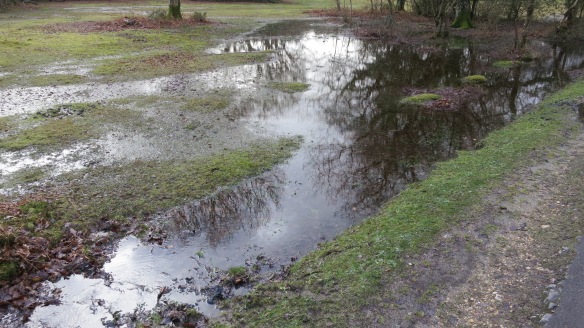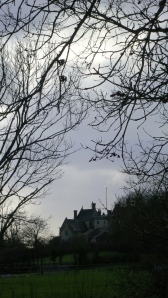The storm, having filled the deepest ditches, and extended the pools on the fields and the roads, had desisted this morning when we began the day with a shopping trip to Tesco. This supermarket, like all the other home-grown ones, is feeling the squeeze from the Germans, Lidl and Aldi. There were notices everywhere announcing cheaper brands.
By midday the dull weather had evaporated into clear blue sunlit skies. After lunch I walked up Hordle Lane, right into Sky End Lane, left into Vicarage Lane, and left again, returning home back along Hordle Lane. I was lucky, for the rain set in soon afterwards.
Discarded detritus now floated in ochre waters of the ditches which I photographed with my back to the warming sun.

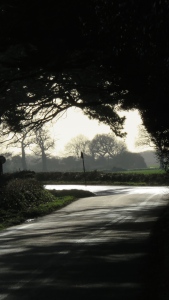


 Pools glinted on the lanes and reflected the trees and skies above. A jogger ran past the paddock in which the ponies chomped on their fodder. Later he returned in the opposite direction, possibly eventually passing a woman and her exotic looking dog glowing in the sunlight, and casting long shadows.
Pools glinted on the lanes and reflected the trees and skies above. A jogger ran past the paddock in which the ponies chomped on their fodder. Later he returned in the opposite direction, possibly eventually passing a woman and her exotic looking dog glowing in the sunlight, and casting long shadows.
 Some vehicles sped through the pools on the tarmac, sending up showers of water; others slowed and sprayed a little.
Some vehicles sped through the pools on the tarmac, sending up showers of water; others slowed and sprayed a little.

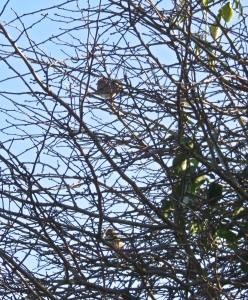 On Vicarage Lane, which enjoyed numerous reflective puddles, I engaged in conversation with a friendly woman tending her garden. She had noticed me attempting to photograph small birds in her trees. We didn’t know what they were, but they were attracted by nuts she had hung up for her visiting tits, siskins, and a solitary woodpecker.
On Vicarage Lane, which enjoyed numerous reflective puddles, I engaged in conversation with a friendly woman tending her garden. She had noticed me attempting to photograph small birds in her trees. We didn’t know what they were, but they were attracted by nuts she had hung up for her visiting tits, siskins, and a solitary woodpecker.
Blackbirds scurried in the hedgerows.
At the corner of Vicarage and Hordle Lanes, lies the Parish Church of All Saints, Hordle. Shafts of gleaming sunlight illuminated the sleepy resting place of former parishioners.
Jackie’s matured liver and bacon casserole was enhanced by the discrete taste of fresh mushrooms and peppers for tonight’s dinner. They were accompanied by prime mashed potato, and crisp cabbage, carrots and cauliflower, then followed by Tesco’s finest Belgian chocolate choux buns. Our dessert was purchased this morning at half price. Such is the UK’s obsession with ‘best before’, ‘use by’, and ‘sell by’ dates, that supermarkets cannot sell goods beyond whichever of these phrases appears the most relevant. Neither, for fear of lawsuits for food poisoning, are they able to give them away. They therefore do the next best thing and reduce the price. Our buns bore the legend ‘use by’ today. Had we purchased them later in the day, they would probably have been even cheaper. In this particular outlet you can recognise reduced items by their yellow ticket.
We each drank the same beverage as yesterday.

